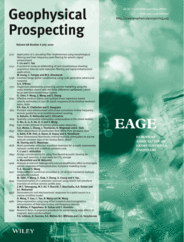
Full text loading...
 , Guofa Li1
, Guofa Li1 , Shumei He2
, Shumei He2 , Hao Li1
, Hao Li1 , Zhewu Wang3
, Zhewu Wang3
Seismic attenuation compensation is a spectrum‐broadening technique for enhancing the resolution of non‐stationary seismic data. The single‐trace attenuation compensation algorithms ignore the prior information that the seismic reflection events are generally continuous along seismic traces, thus, the compensated result may have poor spatial continuity and low signal‐to‐noise ratio. To address this problem, we extend the single‐trace approaches to the multi‐trace algorithms and furthermore propose a multi‐trace attenuation compensation with a spatial constraint. The frequency‐space prediction filters are the key to construct this spatial regularization. We test the effectiveness of the proposed spatially constrained attenuation compensation algorithm by applying both synthetic and field data examples. Synthetic data tests indicate that the proposed multi‐trace attenuation compensation approach can provide a better compensated result than single‐trace attenuation compensation algorithm in terms of suppressing noise amplification and guaranteeing structural continuities. Field data applications further confirm its stability and practicality to improve seismic resolution.

Article metrics loading...

Full text loading...
References


Data & Media loading...

